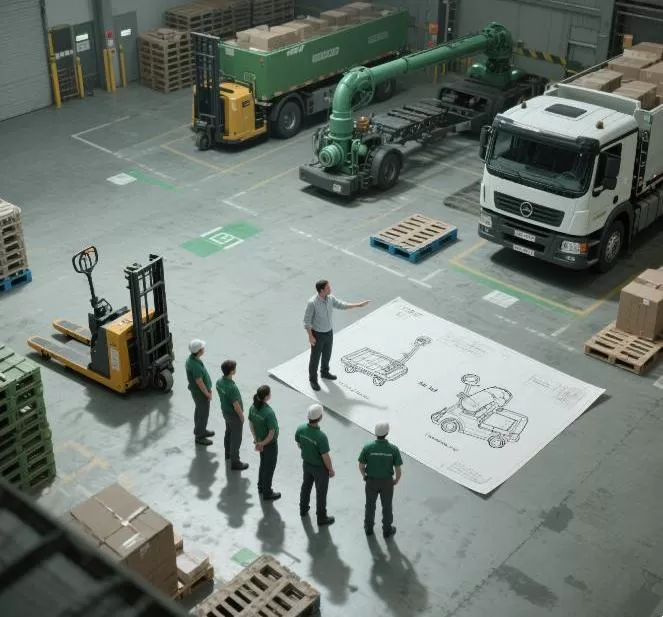Pallet Truck or Pump Truck? Top 5 Industry Terms Everyone Gets Wrong
Let's say someone in Europe orders a ‘pump truck,’ thinking it's just a simple tool to move pallets around the warehouse. The shipment arrives from an overseas supplier—only to find it's not quite what they had in mind. Turns out, they were both referring to the same machine… or were they?
In global logistics and material handling, language can be a bigger barrier than you think. Industry terms are often tossed around loosely, and what one region calls a “pallet truck,” another might call a “pump truck” or even a “jack.” Let's clear the confusion.
The cause of this mix-up is one very simple piece of equipment: the hand-operated pallet mover. In the UK and much of Europe, it's widely referred to as a pallet truck. In North America, however, pump truck is the more common term. Despite the linguistic difference, the function is the same: a manual tool used to lift and move palletized goods short distances. This regional variation can lead to mismatched expectations during cross-border transactions.

To clear things up, we've picked out five common terms that often lead to misunderstandings.
Pallet Jack vs. Forklift
They're often mentioned together because both handle pallets, but their jobs are pretty different. A pallet jack mostly moves things around at ground level and usually works manually or with just a little bit of power. A forklift is a much bigger machine, built to lift heavy loads up high and handle more demanding tasks.
Hand Truck vs. Trolley
A hand truck is a straightforward, two-wheeled tool designed to help tilt and move boxes or smaller items with ease. In contrast, a trolley usually refers to a flat platform cart used for transporting larger or multiple items at the same time.
Stacker vs. Reach Truck
There is no doubt that both are used to stack pallets, but that’s where the similarities end. A stacker is compact and best for small-scale storage with moderate lifting heights. A reach truck is designed to move through tight warehouse aisles and lift things up to much higher shelves.
Order Picker vs. Stock Picker
Technically, both refer to equipment that allows operators to retrieve items from racks. However, order pickers often include a platform for the operator to stand on, whereas stock pickers may refer more broadly to the role or manual picking process.
Manual Jack vs. Hydraulic Lift
A manual jack relies on physical effort to lift a load slightly off the ground, ideal for short-range movement. A hydraulic lift, on the other hand, uses hydraulic power to raise heavier items vertically, sometimes several feet. The intended lifting height makes all the difference.

Calling a tool by the wrong name might not seem like a big deal—until it causes a shipment delay, the wrong item shows up, or something gets damaged. For buyers, using the right term makes it way easier to get exactly what you need. And for sellers, clear product names help cut down on questions, mix-ups, and returns.
If you really want to avoid confusion, don't just describe your product—show it. Including clear photos and usage diagrams in your listings helps people instantly understand what they're getting, no matter what term they're used to. A clear photo helps avoid mistakes, questions, and wasted time.

 EN
EN en
en FR
FR nl
nl ka
ka ru
ru fa
fa ar
ar az
az pl
pl uk
uk hy
hy tr
tr mk
mk de
de pt
pt el
el es
es it
it sq
sq ky
ky